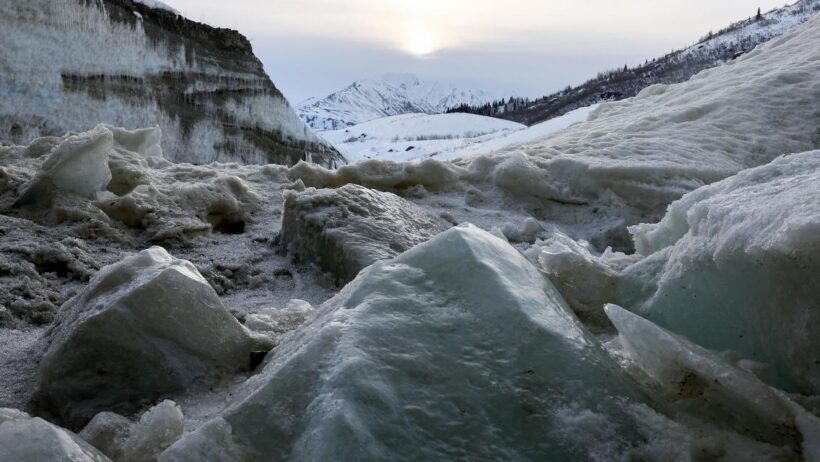Global warming, a phenomenon increasingly ubiquitous in discourses surrounding environmental science, presents a multifaceted challenge to our planet. As the earth’s temperature surges toward catastrophic thresholds, the implications of this climatic fever resonate across ecosystems, economies, and communities. Understanding the various dimensions of global warming is crucial for crafting effective responses to mitigate its far-reaching effects.
At the core of global warming lies the accumulation of greenhouse gases in the atmosphere, predominantly carbon dioxide, methane, and nitrous oxide. These gases trap heat, creating an insulating layer that raises global temperatures. The Intergovernmental Panel on Climate Change (IPCC) has unequivocally warned that we may pass the critical threshold of 1.5 degrees Celsius above pre-industrial levels within the next five years. This is not merely an abstract statistic but rather a prelude to unprecedented changes on our planet.
One of the most visible yet complex impacts of global warming is the alteration of weather patterns. Extreme weather events, such as hurricanes, droughts, and floods, have become increasingly frequent and intense. The 2020 Atlantic hurricane season, for example, shattered records for the number of storms. Such volatility disrupts agriculture, displaces populations, and imposes severe strains on emergency services. Examining the agricultural sector reveals that altered precipitation patterns threaten food security. When crops are consistently subjected to either drought or excessive rainfall, yield variability escalates, exacerbating malnutrition in already vulnerable populations.
Another alarming effect of climate change is the accelerated melting of polar ice caps and glaciers. As temperatures rise, the Greenland and Antarctic ice sheets are losing mass at an alarming rate. This phenomenon contributes to rising sea levels, a dire threat to coastal settlements. Projections indicate that millions of people could be displaced by the end of this century if current trends continue. In cities like Miami or New Orleans, the specter of inundation looms ever closer, prompting urgent discussions on infrastructure resilience and adaptive strategies.
The oceans themselves are not spared from the repercussions of global warming. Increased sea temperatures lead to coral bleaching, which devastates marine ecosystems. Coral reefs, often termed the “rainforests of the sea,” provide habitat for a diverse array of marine life and are essential for the health of oceanic systems. Moreover, the absorption of excess carbon dioxide has led to ocean acidification, which threatens shellfish and coral growth. The latter not only disrupts marine biodiversity but also jeopardizes fisheries that millions depend on economically.
On a broader scale, global warming interlinks with social and economic disparities, heightening inequities in vulnerable communities. Climate change does not affect everyone equally; marginalized populations—often residing in environmentally precarious areas—face greater risks. They may lack the resources necessary for adaptation or recovery after disasters. For instance, low-income neighborhoods often have inadequate infrastructure to withstand flooding or heatwaves, exposing residents to greater health risks. This inequity underscores the moral imperative to address climate change not just as an environmental issue but as a social justice concern.
Public health also bears the brunt of climate change. Rising temperatures have been associated with increased incidences of heat-related illnesses and respiratory issues stemming from air quality degradation. Vector-borne diseases, such as dengue fever and malaria, are expected to spread into new territories as changing climates expand the habitats of disease-carrying organisms. Protecting public health in the face of climate change necessitates proactive measures to bolster healthcare infrastructure and community resilience.
Moreover, the psychological impacts of climate change are an emerging field of study. The phenomenon of eco-anxiety is increasingly prevalent, particularly among younger generations who grapple with fears about the future of the planet. This mental health burden can lead to feelings of helplessness and despair, which in turn hinder effective activism and community engagement. Recognizing the emotional dimension of climate change is essential for fostering a resilient society that actively participates in climate solutions.
Despite the daunting realities of global warming, there are pathways toward meaningful action. Transitioning to renewable energy sources is paramount. Wind, solar, and hydroelectric power represent viable alternatives to fossil fuels, reducing greenhouse gas emissions and lessening our carbon footprint. Implementing energy efficiency measures in industries and homes can also significantly decrease energy consumption.
Additionally, reforestation and afforestation initiatives can act as natural carbon sinks, absorbing CO2 from the atmosphere. These efforts not only sequester carbon but also enhance biodiversity and stabilize soils, showcasing the interconnectedness of ecological health with climate legislation. Sustainable land management practices also play a critical role in curbing emissions from agriculture and promoting food security.
Policy interventions are essential for steering society toward a sustainable future. Governments must prioritize climate action through legislation that curtails emissions and incentivizes green technologies. International cooperation is equally critical; climate change knows no borders, necessitating a unified global response that embraces equity and justice in its strategies.
In summary, the unseen impacts of global warming are vast and complex, encompassing ecological, social, and health-related dimensions. As the planet’s fever intensifies, it is imperative that we mobilize collective action to mitigate and adapt to these challenges. Only through informed understanding and committed intervention can we hope to safeguard our planet for future generations.




